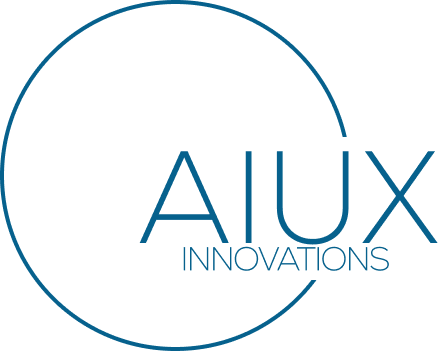The Fear: AI as a Threat to UX Careers
Everywhere you look, the narrative is the same: AI is coming for jobs. Designers, writers, developers, no one feels immune. In UX, that fear often takes the shape of “AI will automate design, so what will I do?”
It’s an understandable anxiety. Tools that generate wireframes, write copy, or test interfaces in seconds feel like they’re replacing the craft we’ve spent years building. But here’s the truth: AI doesn’t replace the human heart of UX, it amplifies it.
The Reality: UX Is About People, Not Pixels
UX has never been just about pushing pixels around. At its core, UX is about:
- Understanding human behavior.
- Balancing business needs with empathy.
- Designing flows that reduce friction and build trust.
These are deeply human skills: pattern recognition, emotional intelligence, and creativity in solving ambiguous problems. AI can crunch numbers and generate options, but it can’t understand why a frustrated patient abandons a healthcare app or how to design trust into a financial dashboard.
That’s the designer’s job.
How AI Makes UX Professionals Stronger
1. Faster Research, Deeper Insights
AI can transcribe, cluster, and analyze interviews at scale. Instead of spending hours coding notes, you can focus on interpreting the why. AI gives you breadth; you bring the depth.
2. Prototyping at the Speed of Thought
Generative tools can spin up multiple layouts in seconds. The point isn’t that the AI made the design, it’s that you now have more options to evaluate, refine, and adapt to real user needs.
3. Personalization at Scale
AI can tailor interfaces to individual behaviors, something humans can’t do one-by-one. Designers define the guardrails: how far personalization should go, how to preserve trust, and when to simplify.
4. Continuous Feedback Loops
Instead of waiting for quarterly usability studies, AI can surface real-time user pain points through analytics, heatmaps, and anomaly detection. The designer’s role? Decide which issues matter, prioritize them, and reframe the journey.
5. Freeing Time for Strategy and Storytelling
By automating repetitive tasks (like creating design variations or formatting documentation), AI frees UX leaders to focus on the bigger picture: aligning design with business outcomes, advocating for users, and telling stories that move executives to act.
The Payoff: Designers Who Lead, Not React
When you stop viewing AI as a competitor and start treating it as a collaborator, the job of UX doesn’t shrink, it expands. You’re no longer buried in repetitive execution. You’re elevated into the role that matters most: translating human needs into meaningful experiences.
How Google AI Studio Accelerates UX Prototyping
One of the most exciting shifts is how tools like Google AI Studio allow UX teams to go from concept → prototype → design system much faster than before. Here’s how it fits into the workflow:
1. Rapid Concept Generation
- With a natural language prompt, designers can describe a flow:
- “Build me a mobile onboarding screen for a health app that asks for basic info, shows progress, and emphasizes trust.”
- AI Studio generates layouts, variations, and even copy instantly.
- Instead of starting from a blank screen, you begin from a palette of possibilities.
2. User Flow Mapping
- Beyond single screens, AI Studio can sketch entire flows: registration → verification → dashboard.
- This creates a low-fidelity prototype that product managers, engineers, and stakeholders can review immediately.
- Pain points or missing elements are identified earlier, saving rounds of redesign later.
3. Exporting to Figma
- The magic isn’t in AI stopping at mockups, it’s in exporting.
- Google’s AI Studio can generate structured outputs (like JSON or UI kits) that plug directly into Figma.
- That means you don’t just get images, you get editable frames, components, and styles inside your design system.
4. Iterate With Data, Not Just Opinion
- Once in Figma, designers apply brand guidelines, accessibility standards, and real user feedback.
- The AI-provided prototype becomes the starting point, while the UX designer ensures it meets human needs, not just machine logic.
- It’s not about AI making the final design; it’s about UXers spending less time sketching rectangles and more time refining the experience.
Why This Matters for UX Roles
- Speed: What used to take days of wireframing can now be tested in hours.
- Clarity: Stakeholders see prototypes early, aligning faster.
- Focus: Designers spend their energy on strategy, empathy, and storytelling, the work AI can’t do.
- Scale: Teams can explore multiple directions quickly without blowing timelines.
The Designer’s New Role
Instead of fearing automation, UX professionals become curators and translators:
- Curators of AI-generated prototypes, deciding what works and what doesn’t.
- Translators of business needs into human-centered flows that AI alone can’t understand.
The Bigger Lesson
Technology has always shifted the tools of design, from pencils to Photoshop to Figma. Each shift raised the floor but never eliminated the need for designers. AI is just the next step.
If you lean into it, AI won’t take your job. It’ll help you do your job better, conduct faster research, develop more innovative prototypes, and gain sharper insights. And that’s precisely what the world needs from UX right now.
